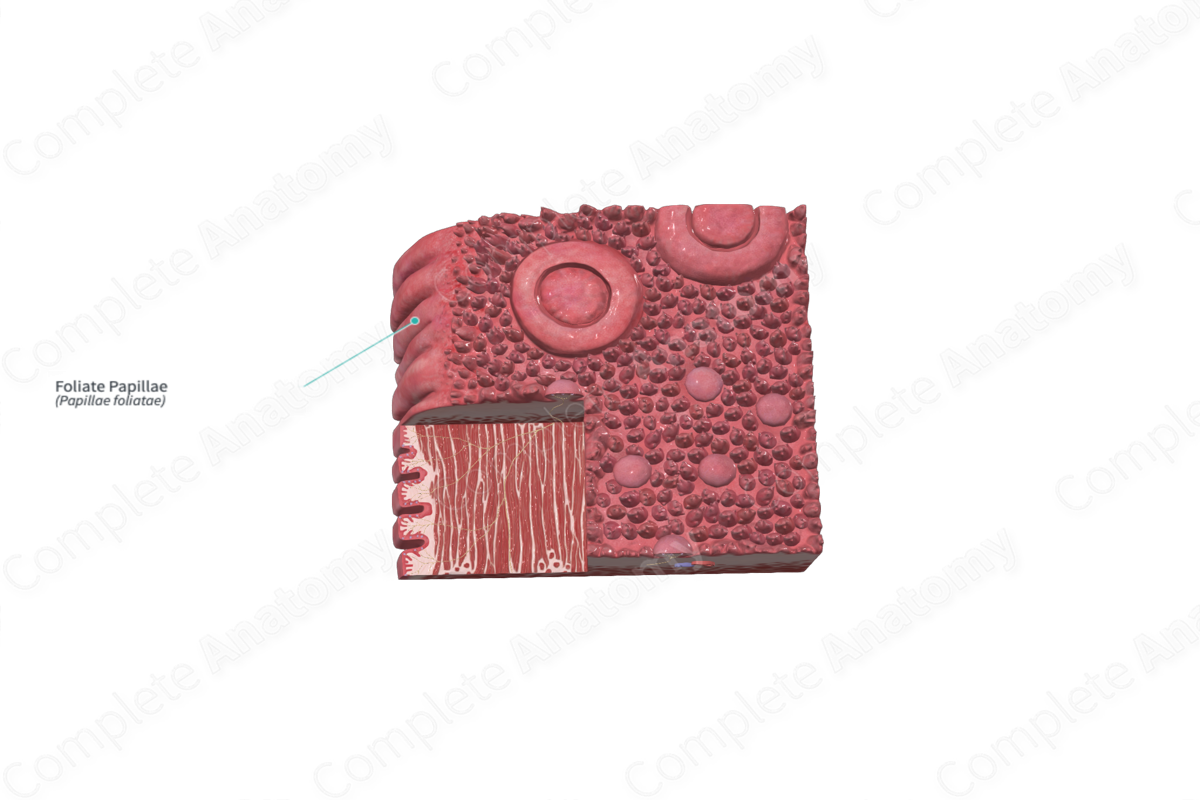
Quick Facts
The foliate papillae are the parallel mucosal folds on the margins of the tongue at the junction of its body and root (Dorland, 2011).
Related parts of the anatomy
Structure and/or Key Features
The foliate papillae are located on the posterolateral sides of the tongue bilaterally, just at the margin of the sulcus terminalis. They appear as an array of vertical, red ridges. These ridges are close together, and there are thin sulci between them. There is an abundance of taste buds with the ridges, lining the lateral walls.
Foliate papillae are covered by a non-keratinized stratified squamous epithelium and participate in gustation by activation of the taste buds and the resulting signal transduction.
Anatomical Relations
The foliate papillae are anterior to the palatoglossal arches at the isthmus of the fauces, and just anterolateral to the terminal sulcus of the tongue. The vertical ridges of the foliate papillae are in contact with the lower back teeth and the accompanying gingiva.
Function
The foliate papillae are one of the three types of lingual papillae involved in gustation, which is the detection of the different tastes of salty, bitter, sour, and sweet, and savory (Ikeda, 2002). It is important that all areas of the tongue are responsive to the different modalities of taste. However, some taste buds respond to a greater amount of chemical activation, while some respond to less. The simultaneous activation of different taste buds is what leads to the recognition of specific tastes.
References
Dorland, W. (2011) Dorland's Illustrated Medical Dictionary. 32nd edn. Philadelphia, USA: Elsevier Saunders.
Ikeda, K. (2002) New seasonings. Chem Senses, 27(9), 847-9.
